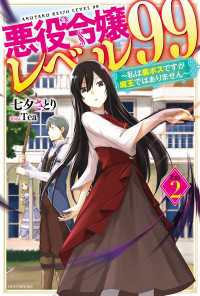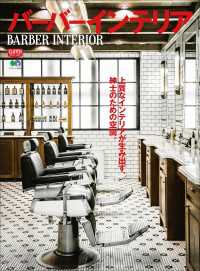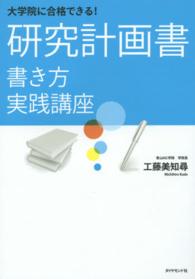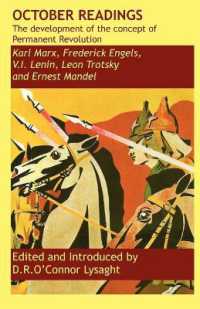Full Description
With lots of examples and color images, this resource is both a foundational text and a practical guidebook for bringing contemporary art into elementary and middle school classrooms as a way to make learning joyful and meaningful for all learners. The author shows how asking questions and posing problems spark curiosity and encourage learners to think deeply and make meaningful connections across the curriculum. At the center of this approach is creativity, with contemporary visual art as its inspiration. The text covers methods of creative inquiry-based learning, art and how it connects to the "big ideas" addressed by academic domains, flexible structures teachers can use for curriculum development, creative teaching strategies using contemporary art, and models of art-based inquiry curriculum. Book Features:
Provides research-based project ideas and curriculum models for arts integration.
Shows how Project Zero's flexible structures and frameworks can be used to develop creative inquiry and an arts integration curriculum.
Explains how contemporary visual art connects to the four major disciplines—science, mathematics, social studies, and language arts.
Includes full-color images of contemporary art that are appropriate for elementary and middle school learners.
Demonstrates how arts integration can and should be substantive, multi-dimensional, and creative.
Contents
Foreword by Connie Stewart
Preface
Acknowledgments
PART I: Foundations of Creative Inquiry
1 Learning Through Creative Art-Based Inquiry
Creative Art-Based Inquiry Learning
The First Grade Community Inquiry
Other Key Aspects of the Creative Inquiry Approach
2 Curriculum Integration Through Creative Inquiry
The Disciplines: Overlaps, Intersections, and Hybrids
Curriculum Integration
Art as an Integrative Discipline
Art and Integrated Creative Inquiry
PART II: The Academic Disciplines and Related Art
3 The Natural Sciences: Understanding the Natural World
Four Dimensions of the Natural Sciences
Comparing Science and Art
Examples of Art That Explore Cross-Cutting Concepts
Examples of Art Inspired by Science
Integrating Science and Art in the Classroom
4 Mathematics: Logic and Abstraction Meets Application and Aesthetics
Four Dimensions of Mathematics
Intersection of Math and Art
Examples of Art Inspired by Concepts in Math
Integrating Math and Art in the Classroom
5 Social Studies: Understanding Ourselves and Others
Four Dimensions of Social Studies
Intersection of Social Studies and Art
Examples of Art Exploring Concepts in Social Studies
Integrating Art and Social Studies in the Classroom
6 Language Arts: Creative Writing and Storytelling
Four Dimensions of Creative Writing
Kinds of Stories
Art That Tells Stories
Literacy Through Visual Art
PART III: Art-Based Strategies for Creative Inquiry
7 Learning Strategies for Creative Inquiry
Kinds of Creative Thinking
Creative Strategies in Contemporary Art
Strategies for Thinking, Inquiry, and Learning
The Research Workbook
8 Frameworks and Strategies for Curriculum and Pedagogy
Utilizing the Project Zero Frameworks
Creative Curriculum Development
9 Inquiry Trails: Examples of Creative Inquiry-Based Art Integration
Patterns and Mathematics in Natural Forms
Animal Structures and Architecture
An Imaginary Island World
Medicinal Plant to Treat a Social Issue or Problem
Me and My World
Concluding Remarks
References
Index
About the Author and the Contributors
-

- 電子書籍
- 悪役令嬢レベル99 その2 ~私は裏ボ…
-

- 電子書籍
- バーバーインテリア






